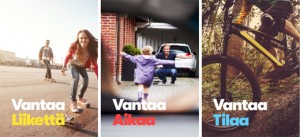Looking forward to give a talk at the University of Copenhagen, department of Nordic Research, 17 April 2015. The talk will be at the Institute of Name Research. Abstract below.
The talk is part of my research project on the narration of waterfront development in Helsinki.
See also the department’s website for more information: http://nfi.ku.dk/konferencer-og-seminarer/ameel17042015/
Abstract
In urban studies and urban planning, the last decades have witnessed something of a “narrative turn”: an increasing interest in the potential of narratives. In the case of Helsinki’s ongoing and large-scale urban projects, city narratives have been explicitly foregrounded by the City Planning Department.
The developments at Jätkäsaari and Kalasatama, two waterfront sites in central Helsinki, provide particularly complex case studies. The most conspicuous use of cultural narratives is the recent move of the Helsinki City to hire 8 artists to help the Planning Department to develop the city, the mediatized use of landscape art to help create spatial identities, and the commissioning of a literary novel in Jätkäsaari. It is possible to also identify several examples of less obvious, but at least as pervasive narratives, from official websites with historical information, to the fostering of narrative treads in social community websites, and the mini-narratives provided by street names and 3D-projections of how this neighborhood will look like in the future.
My presentation explores how methods from literary and narrative studies can bring new insights to the many – often very diverse – narratives that are used consciously and unconsciously in the development of new urban areas. How are such narratives structured? Are they used merely as vehicles to brand new neighborhoods, or as means to legitimize specific – perhaps controversial? – solutions? Or are they used to create more tangible experiences of belonging, and to strengthen a sense of personally experienced place? I will apply methodologies from narrative studies, such as genre, plot and metaphor, and conduct a close reading of the relevant planning documents. I will conclude with an examination of the toponyms of the streets, quarters and squares in Kalasatama and Jätkäsaari, and with an analysis of how these place names complement the planning narratives.


